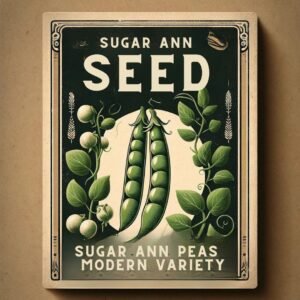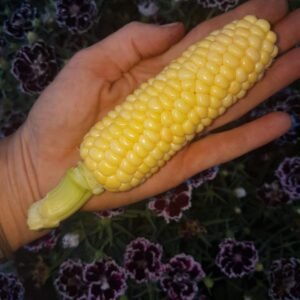History of the Wonderberry (Solanum burbankii)
The wonderberry, also known as Sunberry or garden huckleberry, was developed by the famous plant breeder Luther Burbank. It is believed to be a hybrid of various Solanum species, possibly introduced around the early 1900s. The plant was met with both enthusiasm and controversy, particularly concerning its edibility and flavour quality. Burbank praised it for its productivity and ease of growth, though some critics dismissed it as an unremarkable nightshade or even potentially toxic, a confusion often due to its relation to other nightshades.
How to Grow Wonderberry
Climate and Soil: Wonderberry plants are quite adaptable but perform best in well-draining soil with a neutral pH. They thrive in full sun but can tolerate partial shade.
Planting: Sow seeds indoors about 6-8 weeks before the last expected frost. Transplant outdoors when the danger of frost has passed and temperatures consistently stay above 50°F.
Water and Fertilization: Regular watering is crucial, especially in dry periods. However, be careful not to overwater. A balanced fertilizer can be helpful once or twice during the growing season.
Care: Similar to tomatoes in care, they need some support as they grow taller. Regular weeding and mulching help retain soil moisture.
Harvesting: Fruits ripen about 75 to 85 days after planting. They turn from green to a glossy black when ripe and are best harvested when fully colored and slightly soft to the touch.
Uses of Wonderberry
Wonderberries are mainly used in culinary applications, particularly for sweet dishes:
Pies and Desserts: Their flavor enhances when cooked with sugar, making them excellent for pies, jams, and jellies.
Juices and Syrups: Can be juiced or boiled down into syrups for use in beverages or as a sauce.
Baking: Often used in muffins and pancakes.
Unique Recipes with Wonderberry
Wonderberry Jam:
Ingredients: 4 cups wonderberries, 3 cups sugar, ¼ cup lemon juice.
Directions: Crush wonderberries in a saucepan, add sugar and lemon juice. Bring to a boil and simmer until thickened. Cool and store in sterilized jars.
Wonderberry Pie:
Ingredients: Pie crust, 2 cups wonderberries, 1 cup sugar, 2 tablespoons cornstarch, a dash of lemon juice.
Directions: Mix wonderberries with sugar, cornstarch, and lemon juice. Pour into pie crust, add top crust. Bake at 375°F for 45 minutes until crust is golden.
Wonderberry Muffins:
Ingredients: 2 cups flour, 1 cup sugar, 2 teaspoons baking powder, ½ cup milk, ¼ cup melted butter, 1 cup wonderberries.
Directions: Combine dry ingredients. Mix in milk and butter until just combined, fold in wonderberries. Spoon into muffin tins and bake at 350°F for 25 minutes.
Some source claim the leaves are also edible.
What is the difference between the wonderberry and garden huckleberry?
The wonderberry and garden huckleberry are often confused with each other due to their similar names and characteristics. However, they are distinct entities with some notable differences:
Origin: Wonderberry is a hybridized variant of garden huckleberry, created by Luther Burbank by crossing Solanum guineense with S. villosum. Garden huckleberry, on the other hand, is a plant species native to Africa.
Flavour: Wonderberries are known for their superior flavour compared to most garden huckleberries, although some sweet varieties of garden huckleberry can be worthwhile for home growers.
Appearance: Wonderberries and garden huckleberries are difficult to distinguish visually, but wonderberries are often described as having a more compact growth habit, typically reaching 12-24 inches in height.
Growing conditions: Both wonderberries and garden huckleberries are relatively low-maintenance plants, but wonderberries are more adaptable to different environments and can thrive in a variety of conditions.
Availability: Wonderberries are less commonly found in nurseries and seed catalogs, while garden huckleberries are more widely available.
These heirloom seeds are cultivated and shipped by Garden Faerie Botanicals. Organically grown in British Columbia, Canada, they are open-pollinated and ideal for seed saving while supporting food security.









Reviews
There are no reviews yet.